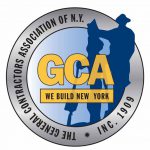Court Dismisses All Claims Against City and Contractor in Highway Motor Vehicle Accident Case
published on November 02, 2017
Court Dismisses All Claims Against City and Contractor in Highway Motor Vehicle Accident Case
published on November 02, 2017
In a decision dated October 18, 2017, Justice Kevin J. Kerrigan granted our clients, the City of New York and E.C.C.O. III Enterprises, Inc., summary judgment dismissing the plaintiff’s complaint against them together with all cross-claims. The plaintiff, a driver of a motor vehicle on the northbound Van Wyck Expressway, alleged that on May 6, 2014, she was injured when her vehicle was struck from behind by a truck owned and operated by the co-defendants, after which the plaintiff’s vehicle came into contact with a concrete barrier. The City moved to dismiss the claims against the it because the City did not own the Van Wyck Expressway where the plaintiff’s accident occurred, the City did not perform or hire anyone to perform any construction work at the location and the City was not legally responsible for maintaining the Van Wyck Expressway. The Court agreed and held that the road is a New York State arterial highway upon which the City did not direct or control any work. The Court also held that the City was not responsible for the roadway pursuant to the Highway Law, warranting dismissal of all claims against it. E.C.C.O. moved to dismiss all claims against it because the plaintiff was not a party to E.C.C.O.’s contract with the New York State Department of Transportation, and therefore, E.C.C.O. did not owe a duty to the plaintiff. E.C.C.O. further argued that the concrete barrier was properly positioned, the lane markings were properly delineated, the travel lanes were sufficiently wide and E.C.C.O. reasonably and properly relied upon the plans provided by the NYSDOT. In dismissing all claims against E.C.C.O., the Court held that E.C.C.O. provided ample evidence that it did not create or exacerbate a dangerous condition, was not responsible for the design plans of the NYSDOT and was not responsible for implementing any traffic control at the location. Accordingly, the Court granted the City and E.C.C.O. summary judgment and dismissed all claims against these defendants as a matter of law.
Clark v. City of New York et al., Index No. 16149/14 (Queens Co. Sup. Ct., Oct. 18, 2017)
On October 26, Stephen M. Cohen and Thomas J. Hall lectured at a seminar for Travelers Insurance Company entitled “Defending Construction Zone Accidents,” in New York, New York.
published on October 26, 2017
On October 26, Stephen M. Cohen and Thomas J. Hall lectured at a seminar for Travelers Insurance Company entitled “Defending Construction Zone Accidents,” in New York, New York.
published on October 26, 2017
Court Dismisses Complaint and All Cross-Claims Against General Contractor
published on October 13, 2017
Court Dismisses Complaint and All Cross-Claims Against General Contractor
published on October 13, 2017
In a decision dated October 4, 2017, Justice Paul J. Baisley, Jr. granted our client, Manhattan Business Interiors, summary judgment dismissing the plaintiff’s complaint against it together with all cross-claims. The plaintiff, a Superintendent of Buildings and Grounds at CUNY Queens College, alleged that on October 31, 2011, he fell partially into a two-foot wide “scenery trench” located at the back of the stage of the Goldstein Theatre while attempting to dodge a pile of wood debris. At the time of the accident, the plaintiff claims that he was taking part in a walk-through of the theatre which was in the process of being renovated. The City University Construction Fund hired LiRo Program and Construction Management, P.C. to act as the construction manager in connection with the renovation of the Kupferberg Center for the Arts Complex at Queens College. LiRo in turn contracted with MBI to perform general contracting work at the project including renovations to the Goldstein Theatre. MBI hired more than one dozen subcontractors for the project. In dismissing plaintiff’s Labor Law §240(1) claim, the Court held that the plaintiff did not sustain injuries resulting from an elevation-related hazard. The Court also found that the plaintiff was not entitled to the protections of Labor Law §241(6) as he was neither employed by a contractor retained to perform a covered activity nor was he permitted or suffered to carry out such an activity in relation to the subject renovation project. Further, the activity he was engaged in at the time of the accident, namely his inspection of a water leak, was consistent with the type of routine maintenance he would be expected to carry out as a janitorial superintendent. Plaintiff’s Labor Law §200 and common law negligence causes of action were also dismissed because MBI neither created the hazardous condition nor had actual or constructive notice of it.
Mandart v. MBI Construction, Inc. et al., Index No. 26654/12 (Suffolk Co. Sup. Ct., Oct. 4, 2017)
Court Dismisses Plaintiff’s Complaint in its Entirety as to Defendants in Construction Accident Case
published on October 06, 2017
Court Dismisses Plaintiff’s Complaint in its Entirety as to Defendants in Construction Accident Case
published on October 06, 2017
In a decision dated October 6, 2017, the Hon. Lisa S. Ottley granted our clients, the owners and tenants of the premises under construction at 4 Metrotech Center, Brooklyn, New York, summary judgment dismissing the plaintiff’s complaint in its entirety. The plaintiff, a laborer employee of the general contractor, Plaza Construction, claimed injuries when he fell off a ladder. The plaintiff was performing cleaning activities when his foreman grabbed a ladder and instructed him to remove certain items hanging from the ceiling which were left over from the removal of HVAC ductwork by the demolition contractor. The foreman climbed the ladder and showed the plaintiff how to perform the task. He also supplied the plaintiff with all the hand tools needed for the job. During the course of extensive questioning over two deposition sessions, the plaintiff admitted that the ladder was in good working condition and defect free. He also admitted that in performing this task he moved the ladder on three occasions in the same area. The incident did not occur until the plaintiff had placed the ladder in the third spot. He again testified that the ladder was sturdy and did not move during the time he was using it. He claimed to have fallen after using two hands to yank a certain item free from the ceiling. The plaintiff brought claims against the defendants for common law negligence and violations of Labor Law §§200, 240(1) and 241(6). In denying the plaintiff’s motion for summary judgment in its entirety and granting the defendants’ motion to dismiss the complaint, the Court held that the defendants had met their prima facie burden and the plaintiff had failed to do so. The Court agreed with the defendants that there was nothing in the record to support the plaintiff’s claims of negligence and violations of the various Labor Law statutes. The court also found that the plaintiff had been provided with the proper equipment needed to successfully perform the tasks assigned. The plaintiff merely relied on a theory that because he was a construction worker and fell from a ladder the Labor Law was automatically violated. The Court agreed with the defendants that a more in depth showing was required including the specific facts surrounding the incident itself.
Newland v. New York City Industrial Development Agency, et al., Index No.1015/15 (Kings Co. Sup. Ct., Oct. 6, 2017)
Court Grants Summary Judgment to Contractor in Bicycle Accident Case
published on September 21, 2017
Court Grants Summary Judgment to Contractor in Bicycle Accident Case
published on September 21, 2017
In a decision dated September 15, 2017, Justice Thomas P. Aliotta granted our client, defendant CCA Civil Inc., summary judgment dismissing the plaintiff’s complaint against it as a matter of law. The plaintiff claimed that he sustained injuries on November 6, 2012, when he fell off his bicycle while riding on the sidewalk. The left handlebar of his bicycle allegedly struck an orange road sign that had become detached from a wooden frame and was situated on the ground and protruding three to four inches onto the sidewalk. At the time of the accident, a construction project was underway which involved the reconstruction of the Staten Island Expressway along the stretch of Narrows Road where plaintiff’s accident occurred. CCA had a contract with the State of New York Department of Transportation for the Staten Island Expressway project. The Court held that CCA established its prima facie entitlement to summary judgment as a matter of law by setting forth evidence that the plaintiff was not a party to its contract with the NYSDOT for the reconstruction of the Staten Island Expressway, and therefore owed plaintiff no duty of care. The Court held that assuming arguendo that the pleadings alleged facts which would establish the applicability of various exceptions to the no-duty rule espoused by the leading Court of Appeals decision in Espinal v. Melville Snow Contractors, Inc., 98 N.Y.2d 136, 773 N.E.2d 485, 746 N.Y.S.2d 120 (2002), the plaintiff’s motion papers failed to raise any triable issue of fact that would support an exception to Espinal. The Court found the relevant contract terms, diagrams and drawings clearly depicted that the area in question was not within the boundaries of the work performed by CCA. The Court also found there was no evidence CCA had actual or constructive notice of the alleged defect for a sufficient length of time prior to the accident. The Court further held that plaintiff’s conclusory assertion that CCA had constructive notice of the defective sign was legally insufficient, noting that the plaintiff admitted at his 50-h hearing that he himself did not see the subject sign before his accident. Finally, the Court held that based on plaintiff’s photographs, which he testified fairly and accurately represented the accident site, the orange road sign at issue was readily observable by a reasonable use of the plaintiff’s senses and the condition of the roadway was not inherently dangerous.
Cortes v. City of New York, et al., Index. No 100118/2014 (Richmond Co. Sup. Ct., Sept.15, 2017)
We are pleased to announce that Seth Cohn has become a Partner of the firm.
published on September 01, 2017
We are pleased to announce that Seth Cohn has become a Partner of the firm.
published on September 01, 2017
Appellate Division, Second Department Affirms Dismissal of Action Against Defendants
published on August 16, 2017
Appellate Division, Second Department Affirms Dismissal of Action Against Defendants
published on August 16, 2017
In a unanimous decision dated August 16, 2017, the New York State Appellate Division, Second Department affirmed the lower court’s dismissal of the plaintiff’s complaint including those causes of action for common law negligence and violations of Labor Law §§200, 240(1) and 241(6) as to our clients, Hill International, Inc., Lemley Hill International, Inc., Lemley International Inc., LIRO Engineers, Inc. and A Daniel Frankfurt Engineers & Architects/HDR Inc., A Joint Venture. The plaintiff sought damages for personal injuries allegedly sustained while working on a project involving the extension of the #7 New York City Subway Tunnel. The plaintiff alleged that he fell from a stack of blasting masts while he was in the process of descending same. In affirming the lower court’s decision, the Appellate Division held the defendants’ evidence that they were not agents of the MTA and neither instructed nor supervised plaintiff was sufficient to make a prima facie showing of the entitlement to judgment as a matter of law, dismissing plaintiff’s causes of action for common law negligence and violations of Labor Law §§200, 240(1) and 241(6).
Lamar v. Hill Int’l, Inc., 153 A.D.3d 685 (2d Dep’t 2017)
Court Dismisses Complaint In Construction Accident Case Involving Fall from Ladder
published on August 09, 2017
Court Dismisses Complaint In Construction Accident Case Involving Fall from Ladder
published on August 09, 2017
In a decision entered on August 9, 2017, Justice Lucy Billings granted the summary judgment motion of our clients, City of New York (“City”) and New York City Department of Transportation (“DOT”), dismissing the plaintiff’s complaint in its entirety. Plaintiff sought damages for personal injuries allegedly sustained on May 17, 2010, when his left foot slipped off a rung then fell two rungs down before catching on the third rung down as he was descending a 20-foot extension ladder. After the close of discovery, the defendants moved for summary judgment seeking to dismiss the plaintiff’s complaint on the grounds that his fall from an allegedly “steep” ladder was not caused by the City’s and the DOT’s negligence or any violations of Labor Law §§200, 240(1) and 241(6). Plaintiff argued that the subject ladder was too steeply pitched, in violation of Labor Law §§240(1) and 241(6) premised upon Industrial Code Rule 1.21(b)(4) (which states that “a ladder shall be inclined a maximum of three inches for each foot of rise”). In granting the motion of the City and DOT, Justice Billings found that plaintiff’s argument “defie[d] the plain language of the regulation, physics, math, common sense” in that both his counsel and expert misread the regulatory language as being a minimum requirement, when it was a maximum requirement for the incline or pitch of the ladder. Justice Billings then confirmed that plaintiff’s expert failed to cite to any industry standards delineating the correct pitch of a ladder.
Joseph Mitchell v. The City of N.Y. et al., Index No. 100256/11 (N.Y. Co. Sup. Ct., Aug. 9. 2017)
Court Grants Summary Judgment to Contractor and City Defendants in Highway Automobile Accident Case
published on August 04, 2017
Court Grants Summary Judgment to Contractor and City Defendants in Highway Automobile Accident Case
published on August 04, 2017
In a decision dated August 3, 2017, Justice Debra A. Silber granted the summary judgment motion of our clients, Tully Construction Co., Inc. and the City of New York, dismissing the plaintiff’s complaint and all cross-claims against them. The plaintiff sought damages for personal injuries sustained in an automobile accident that occurred shortly after midnight on August 24, 2012. After being involved in a minor two car accident, the plaintiff and another driver stopped their vehicles in the left westbound lane of the Belt Parkway and exited their vehicles. Another vehicle then struck the plaintiff’s stopped vehicle in the rear, propelling it into him. The accident occurred in the construction zone for Tully’s work, but work was not taking place at the time of the accident. In granting the motion of Tully and the City, Justice Silber found that “there is not a shred of evidence that the inactive construction site on the Belt Parkway was in any way a contributing factor to either of the accidents.”
Laurent v. Belony, et al., Index No. 3611/13 (Kings Co. Sup. Ct., Aug. 3, 2017)
Stephen M. Cohen Wins Defense Verdict in Action Arising from Negligent Operation of Motor Vehicle Into a Construction Staging Area
published on July 25, 2017
Stephen M. Cohen Wins Defense Verdict in Action Arising from Negligent Operation of Motor Vehicle Into a Construction Staging Area
published on July 25, 2017
The plaintiff, a 74-year-old passenger in a vehicle owned and operated by defendant Stephen Naklicki, sought damages for personal injuries sustained in an accident that occurred in the predawn hours of Monday, August 5, 2013, in a closed truck inspection area which was being utilized by our client, Kiska Construction Inc., as a “staging area” in connection with its rehabilitation of nine bridges project. The staging area was located along the eastbound Long Island Expressway approximately one-half mile west of Exit 66. Mr. Naklicki, who intended to exit at Exit 66, allegedly became confused by the absence of any “ramp closed” signs and drove directly into the staging area, crashing through a chain link fence and finally, crashing into stored concrete barriers that plaintiff argued, were partially on the paved road. Plaintiff alleged that Kiska was negligent in failing to provide adequate signage, warnings and traffic control devices and in otherwise failing to properly close an exit ramp/access road in accordance with the New York State Highway Law, NYSDOT Standard Specifications Section 619 (maintenance and protection of traffic) and the Manual for Uniform Traffic Control Devices. In December, 2016, plaintiff settled with Mr. Naklicki. Following a jury trial on liability before Hon. Janice A. Taylor, Kiska successfully obtained a defense verdict thereby dismissing the plaintiff’s case.
Stoehr v. Stephen Naklicki and Kiska Construction, Inc., Index No. 707071/14 (Queens Co. Sup. Ct., Jul. 24, 2017)








